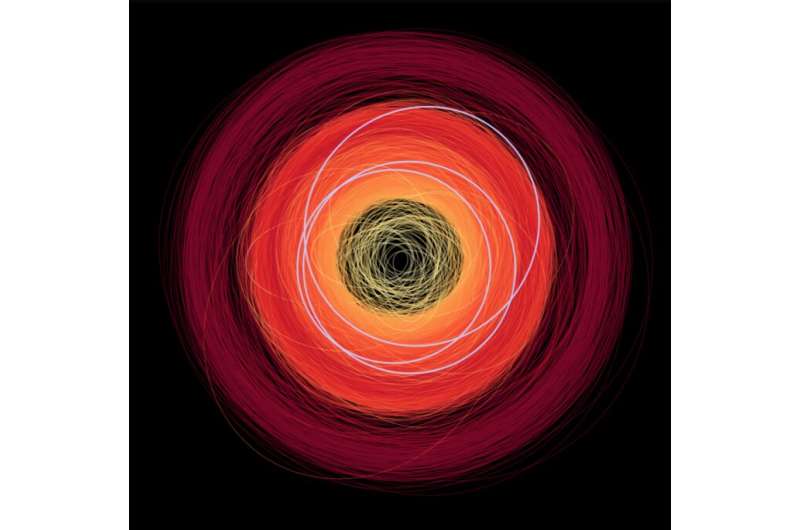Gaia's asteroid discoveries

Animated view of more than 14 000 asteroids in our Solar System from the catalogue in the second data release of ESA's Gaia satellite, published in 2018.
The orbits of the 200 brightest objects are shown in green. In addition, the orbits of the first four asteroids discovered by Gaia are shown in pink.
While Gaia's main scientific goal is to chart a billion stars in our Milky Way galaxy, the satellite is also sensitive to celestial bodies closer to home, regularly observing known asteroids and occasionally discovering new ones.
Three of the newly discovered asteroids, temporarily designated as 2018 YK4, 2018 YL4 and 2018 YM4, were first spotted by Gaia in December 2018, and later confirmed by follow-up observations performed with the Haute-Provence Observatory in France, which enabled scientists to determine their orbits. Comparing these information with existing observations indicated the objects had not been detected earlier.
The fourth discovery, an asteroid with temporary designation 2019 CZ10, was first detected by Gaia in February, and was recently confirmed by ground-based observations by the Mount Lemmon Survey and the Pan-STARRS 1 project in the US.
These four asteroids, while part of the "main belt" between the orbits of Mars and Jupiter, move around the Sun on orbits that have a greater tilt (15 degrees or more) with respect to the orbital plane of planets than most main-belt asteroids.
The population of such high-inclination asteroids is not as well studied as those with less tilted orbits, since most surveys tend to focus on the plane where the majority of asteroids reside. But Gaia can readily observe them as it scans the entire sky from its vantage point in space, so it is possible that the satellite will find more such objects in the future and contribute new information to study their properties.
Alongside the extensive processing and analysis of Gaia's data in preparation for subsequent data releases, preliminary information about Gaia's asteroid detections are regularly shared via an online alert system so that astronomers across the world can perform follow-up observations.
This animation starts showing the position of planets, asteroids and stars on Asteroid Day, 30 June 2019; time has been sped up by a factor 5 million.
Provided by European Space Agency




















